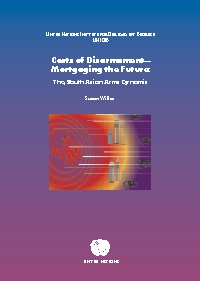In any initiative that attempts to illustrate the cost-effectiveness of arms control, the case has to be made that expenditures on arms control can increase security far more cost-effectively than the equivalent, or much greater, expenditures on military force. For some time, India and Pakistan have been in an armed stand-off, which has led to a protracted arms race. This dynamic offers a useful case study: what are the costs for these two states of not engaging in arms control?
The political and military elites in Islamabad and New Delhi have legitimized rising levels of military expenditure on the argument that it enhances national security and deters external aggression. Recent events, however, do not support such claims.
Moreover, the arms race is exacting high socio-economic costs on a region which can scarcely afford it. Both countries face high levels of poverty and underdevelopment. By diverting resources from important poverty alleviation targets, the arms race is indirectly contributing to rising levels of internal insecurity and conflict. In this manner the arms race has created a pervasive security-insecurity nexus in which the external security crisis contributes to and exacerbates the internal security concerns.
Although cost-benefit analysis tends to be preoccupied with quantifiable measures, capturing the qualitative variables of arms control and arms racing is often more important, because these have greater social value and/or social detriment along the peace-to-conflict continuum. In Costs of Disarmament - Mortgaging the Future: The South Asian Arms Dynamic, Susan Willett explores alternatives to arms racing that have the potential to reduce tensions while promoting security. For example, one cannot immediately calculate the beneficial effect of confidence- and security-building measures (CSBMs), which are designed to reduce tensions and mutual distrust and to improve inter-state relations over time. However, in many situations CSBMs have translated into disarmament and arms control gains in the long run, thus resulting in reduced military expenditures and improved security.
This is the final volume of UNIDIR's Costs of Disarmament series.
Citation: Susan Willett (2004). "Costs of Disarmament - Mortgaging the Future: The South Asian Arms Dynamic", UNIDIR, Geneva.
